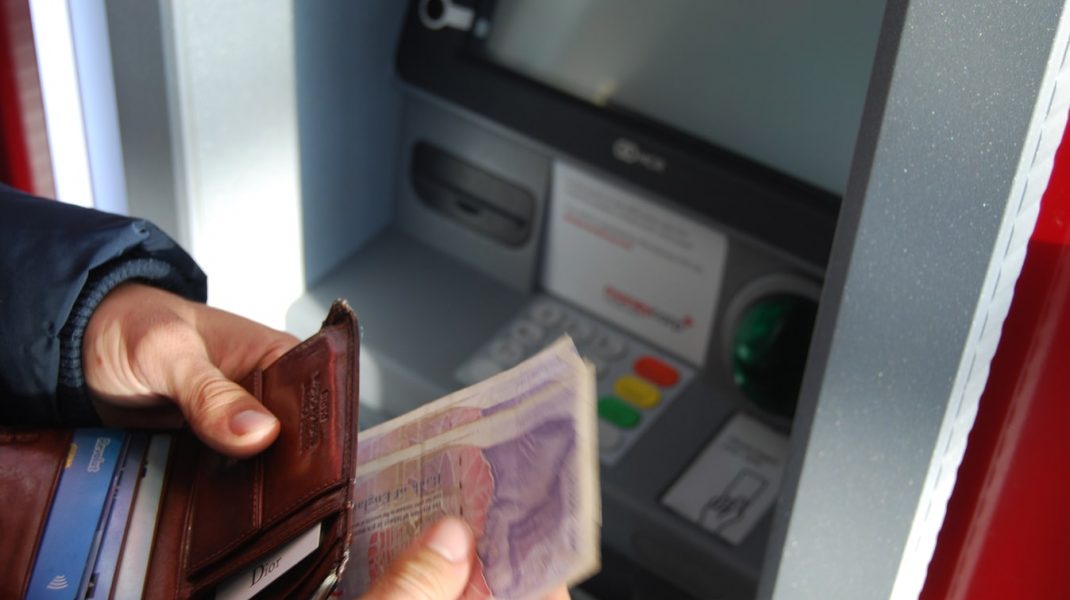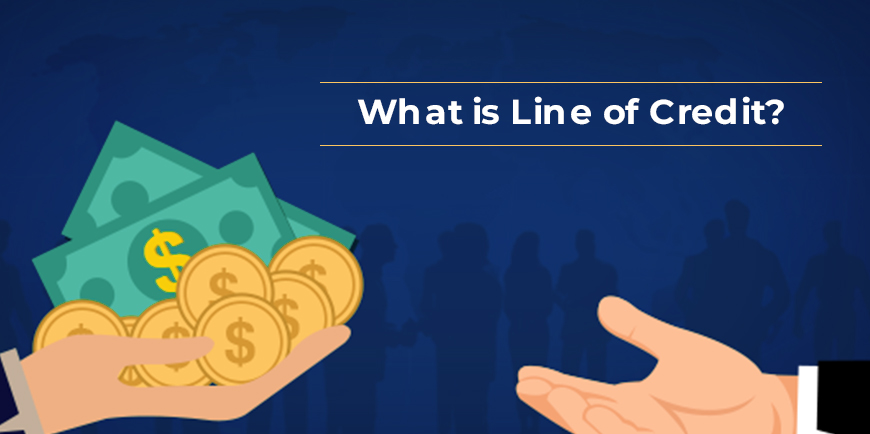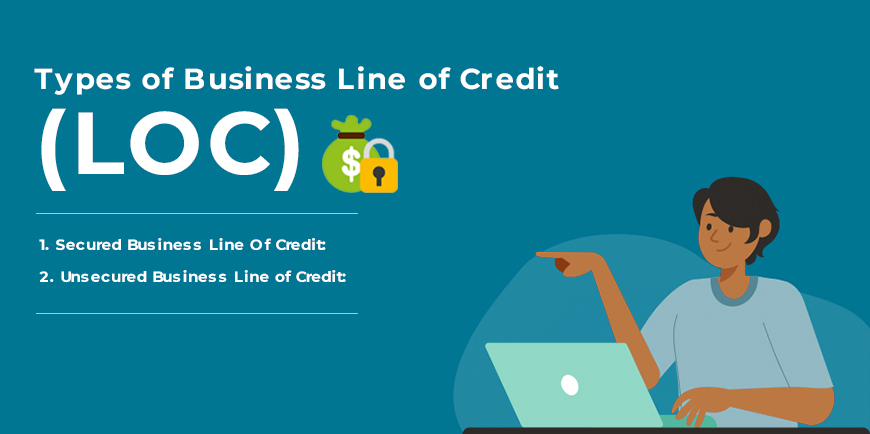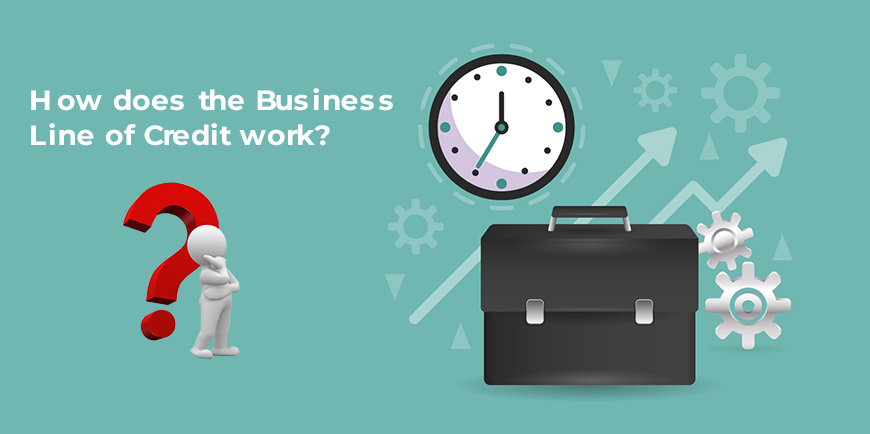Business Line Of Credit: Raise Funds For Your Business Efficiently

If you own a business, you know that the working capital requirements of your business vary depending on your business goals. Sometimes you may need more than the regular amount, especially if you are scaling up operations or production. There might be some other situations where you need quick access to extra working capital. In such situations, a Business Line of Credit can help your business quickly acquire some working capital.
Even the most successful small businesses sometimes face a cash crunch, delayed invoice payments, urgent unplanned expense, and such other working capital deficits. In such situations, having access to some extra funds can be your business’s saving grace.
When it comes to business financing, you have a wide array of options to choose from. You must make that choice wisely as different business financing tools are useful in different circumstances.
Small Business Line of Credit is a popular choice among small businesses for quickly gaining access to the required amount of working capital.
In this article, we will explore in detail everything you need to know about the Business Line of Credit. We will also help you determine when is it right for your business to get a Line of Credit.
TABLE OF CONTENTS
- What is Line of Credit?
- What is a Business Line of Credit?
- Types of Business Line of Credit
- How does the Business Line of Credit work?
- What are the Benefits of a Business Line of Credit?
- What are the drawbacks of a Business Line of Credit?
- Business Line of Credit: Documents and Other Requirements
- Things to Keep in Mind before and after opening a Line of Credit
- How to Apply for a Business Line of Credit?
- When should you get a Business Line of Credit?
- Summary
What is Line of Credit?

Line of Credit is an arrangement between a financial institution and a client that establishes a preset borrowing limit. The client can use this limit at any time.
The client or the borrower can take the money as per their needs until they reach the limit. As the money is repaid, the client can borrow it again in case of a revolving line of credit.
There is a maximum limit on the amount that you can withdraw. Such a limit is set in the agreement and is called a credit limit.
So, unlike loans, where you can borrow only once and then pay back as per the agreement, in case of Line of Credit, you can borrow as needed, pay it back with interest, and then borrow again when required.
Flexibility is the main advantage of this kind of business financing tool. Borrowers can request a certain amount as Line of Credit (LOC), but they are not obligated to use it all. Rather, they can adjust their spending on the LOC to their needs and owe interest only on the amount they draw, not on the entire credit line.
What is a Business Line of Credit?
Businesses use Line of Credit to borrow on a need-basis in place of taking out a fixed loan.
A Business Line of Credit (LOC) is a revolving loan that gives business owners access to a fixed amount of money, which they can use in their everyday operations according to their cash requirements.
Just like a small business loan, a Business LOC provides a business with access to money that can be used to pay off any business expenses. But unlike a small business loan, a Business LOC is revolving; this means you can use the funds up to your approved amount, then repay what you’ve used to make the funds available again.
LOCs are specifically designed to help businesses finance short-term working capital needs, such as purchasing inventory or repairing equipment, making payroll, financing marketing campaigns
Types of Business Line of Credit

There are two types of Business LOCs depending on whether they are secured by collateral or not.
Secured Business Line Of Credit:
In the Secured Business Line of Credit, the business must pledge assets as collateral to secure the loan. Lenders will typically ask for short-term assets since a Small Business Line of Credit is a short-term liability. They typically won’t require capital assets, such as real property, to secure a LOC. If the borrower fails to repay the loan, the lender will assume the ownership of any collateral and liquidate them to pay off the balance.
Unsecured Business Line of Credit:
An Unsecured Business Line of Credit does not require assets as collateral. The lack of collateral means a higher risk to lenders. So, to get an unsecured LOC, you’ll need stronger credit and a positive business track record. Moreover, the interest rates are slightly higher than secured LOCs. Unsecured LOCs are usually smaller.
How does the Business Line of Credit work?

When you open a Business Line of Credit, you’ll receive access to a fixed amount of funds to use as needed. Every month, you’ll receive an invoice reflecting the amount of credit you have used, along with any interest charges.
Your payment depends on the actual interest accrued on these funds while you use them. Once the funds are repaid, that amount is again made available for your utilization. You are only charged interest on the amount of the loan you actually use.
LOC rates and limits are set by lenders. They depend on your risk grade, your collateral, and any servicing requirements. Your risk grade is judged on the basis of factors like the state of your business sector in general, the financial success of your business, your business and personal credit scores, and the availability of collateral.
So, in a Business Line of Credit, you only need to make repayments when the business draws from the line, interest is also charged only when you withdraw the money, the business has complete control over the use of such capital, and there is no penalty for re-paying early.
You might be charged a monthly maintenance fee for letting your Line of Credit sit unused.
Most importantly, you must always carefully read all the terms offered by the bank or lender to make sure you understand all the related fees and charges.
What are the Benefits of a Business Line of Credit?

There are several benefits of using Business Line of Credit (LOC) as a source of business finance. Let’s explore a few:
- Flexibility: Upon getting approval for a Business LOC, you can draw funds when you need them, and use them for whatever legitimate business purpose you want. Funds from a line of credit are revolving, which implies that when you pay them back, you can use the funds again.
- Limited Interest: An important benefit is that with a business line of credit, you are charged interest only on the portion of funds that you withdraw, and no interest is charged on the unused portion of the funds. There might be some other fees also, depending on the situation. And when it comes to fees, make sure you understand them upfront. Some lenders will charge fees to keep your account open, charges for “inactivity” and other fees. So, it is always a good idea to clearly understand and inquire about any potential fees before you acquiesce.
- Build Credit Rating: Ask your lender if they do report back to credit bureaus because not all of them do. If your lender reports back to the credit bureaus, using your line of credit judiciously and repaying on time can be an excellent way to build credit. This raises the credit rating of your business which can help you in the future if you ever need more credit or a term loan.
- Lower Interest and Fees: A business LOC typically does not have as high an interest rate as a credit card or a term loan. Moreover, the terms of use are simpler enough. That’s why in some situations, it is often better to use Business Line of Credit instead of other sources of business finance.
What are the drawbacks of a Business Line of Credit?
Business LOC, as a source of Business Finance, has a few drawbacks. Let’s explore them here:
- Low Limits: Business lines of credit usually have limits higher than a credit card but much lower than a business term loan. If the line has a limit lower than your needs, it's not a very good solution. It just sets you up to accumulate debt without accomplishing your goals. Get in touch with us to know more about the easy approval Business Line of Credit!
- Over Borrowing: A business line of credit lets you act on opportunities. But not every opportunity is a good one, and if you act on too many at once, you may not leverage any of them as much as you should. It can be surprisingly easy to "accidentally" borrow too much against your business line of credit and spend your profits on interest payments. Consider these lines only if you have the financial systems and discipline to avoid this kind of spending hazard.
Business Line of Credit: Documents and Other Requirements
You’ll need to gather the following documents for the loan application:
- Driver’s License
- Voided Business Checks
- Bank Login or 3 months most recent Bank Statements
- FICO score 620+
Apart from the documents, there are some other requirements that you have to fulfill while applying for a Business Line of Credit:
- The business must be at least 6 months old
- The business must reside somewhere in the United States of America
- The business must have earned at least $20,000 in average monthly revenue
- You must also have a FICO score of 620 or above
Things to Keep in Mind before and after opening a Line of Credit

There are certain things that you must understand comprehensively and research thoroughly before applying for a Business Line of Credit and while using the Business LOC. In this section, we will take a look at such points to remember before opening a Line of Credit.
- There may be charges for account set up, transactions, and annual fees. You must check with the lender and enquire about such charges that may be applicable to you.
- Some lenders require that businesses pay down their entire outstanding LOC balance at some point during the year to reduce risk. This is done to assure the lender that the borrower is maintaining a healthy cash flow position in his business.
- Because of the unpredictable nature of the market, the lender always reserves the right to call a LOC payable immediately. This implies that your full balance would have to be paid, and your LOC is reduced to zero without warning. Keep this in mind before relying heavily on Business LOC for your working capital.
- Periodically pay off your debt completely and avoid keeping your balance near your credit limit. This will keep your lender at ease.
- If your company is not profitable, using a Business LOC to cover losses is not the best option. You may have trouble acquiring the funds to repay it later.
- The best time to set up a Small Business Line of Credit is before your business needs it. Lenders are more likely to grant a Business LOC when the business’s cash flow position is strong.
How to Apply for a Business Line of Credit?

We have simplified the process of applying for a Business Line of Credit on our portal. You can apply for a LOC for your business from the comfort of your home and get it approved within a day. You can get a credit limit of up to $250,000 with an interest rate of 1% to 2% per month.
To apply online for a Business Line of Credit you can fill out an easy application here. Or, you can also connect with one of our funding professionals on call. Our experts will take you through the simplified process starting with the qualification, available options, offers, and guide you through the entire application process until you are granted funding.
When should you get a Business Line of Credit?
Applying for a Line of Credit for your Business makes sense if your business is regularly in need of funds to cover short-term cash flow issues, or you need to manage your business’s everyday needs or if you want to take advantage of immediate business opportunities.
Let us take a look at a few examples of situations in which it makes sense to get a LOC:
- A seasonal business that generates most of its sales in the winter could use a Line of Credit in the low season to help cover expenses. The LOC would allow them to maintain normal business activities even as their income fluctuates.
- A business could use a Line of Credit to finance a marketing campaign. Such a campaign would attract new customers and expand sales. The new debt will be paid off quickly with the additional revenue generated by the campaign and grow the business faster.
- If your business needs to cover the expenses while waiting for clients to make payments on sales, then a Business LOC could be useful for cash management.
You must analyze your situation thoroughly before you decide which financing option you should opt for. Different circumstances warrant the use of different business finance products and tools. While some may be beneficial in one situation, others may prove to be disastrous in that situation.
So you must analyze the situation of your business and the purpose for which you need funds, to pick the right business financing tool.
Summary
Keeping your small business finances and operations running smoothly can often be a challenge in today’s fast-paced world. Depending on your business needs, a Small Business Line of Credit could be the simple solution you need to meet your goals at a pace that is right for you.
Business Lines of Credit help small businesses increase revenue and profits. They offer financial flexibility to fill the gaps in the normal business cash cycles. They can be used to harness the essential resources to maintain year-round activity. They can also fund expenses to develop your vision, scale-up your organization, and amplify success. So look ahead and apply before your next busy season, it’s best to have a safety net to fall back on before you really need it.
Did you find this article informative? Did we miss something important? Let us know in the comments below!
Want to know more about the best business finance tools to get funding for your business? Get in touch with us today and we will help you out!


Write a reply or comment
You must be logged in to post a comment.